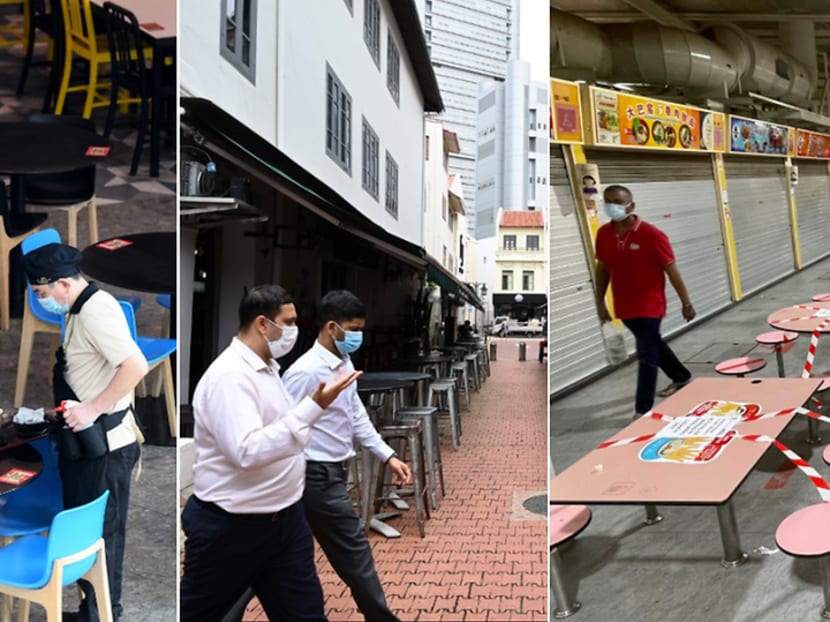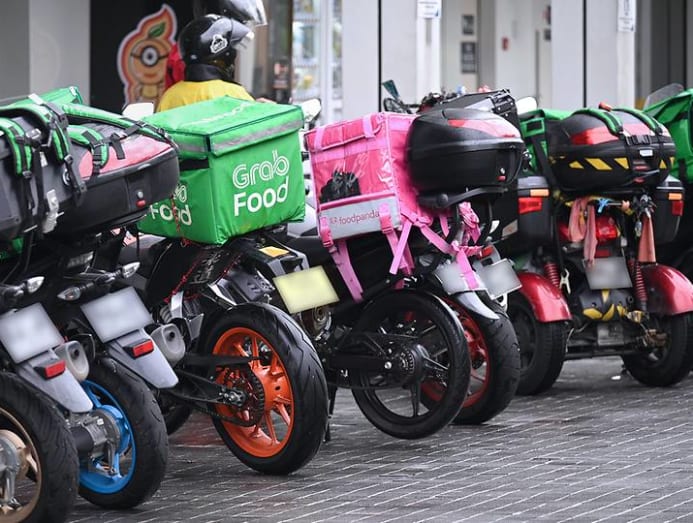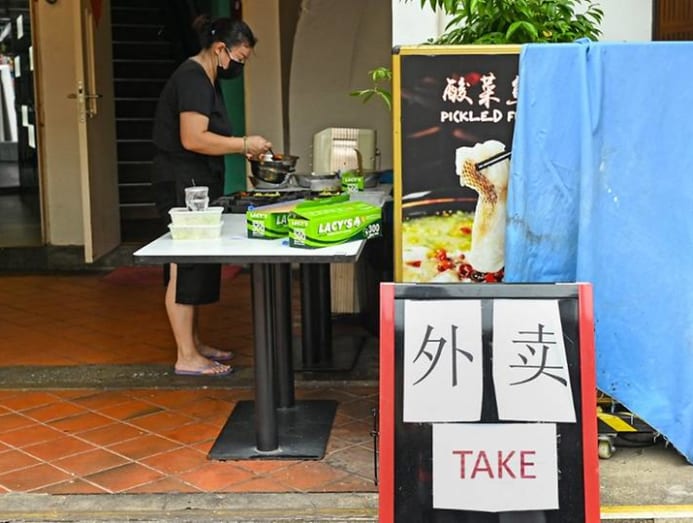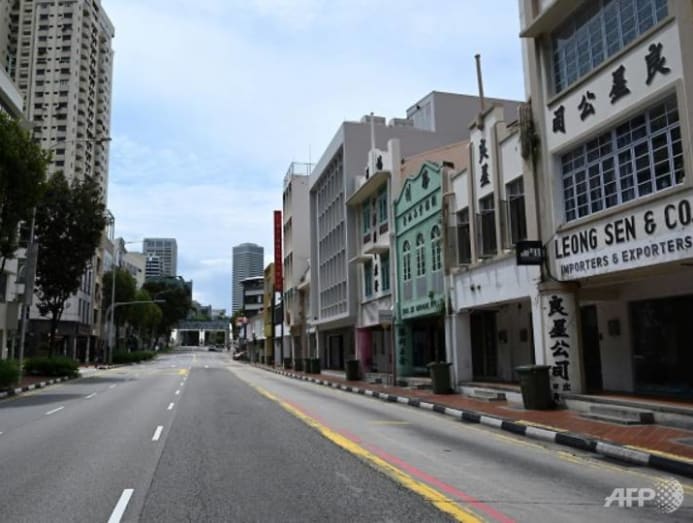commentary Commentary
Commentary: Does Singapore just have too many F&B outlets?
The pandemic marks a reversal of fortunes after a golden age for eateries, as many now suffer. Even after COVID-19 passes, Singapore F&B will witness continued disruption, says SMU’s Dr Seshan Ramaswami.

Empty F&B outlets and hawker centres in Singapore. (Photos: Agencies)
SINGAPORE: The pandemic and accompanying restrictions have hit Singapore’s F&B hard in many different ways.
This second wave of COVID-related restrictions has seen many restaurant closures, including the iconic Swee Kee Eating House.
During the first circuit breaker and the current Phase 2 (Heightened Alert), there was a complete ban on dining out.
In the period in between, restaurants had restrictions on group sizes and how many people they could pack in their eateries. Residents were wary of leaving home to dine out. The eating out experience was also disrupted by masking restrictions.
Government support in multiple ways, including rent relief and job support were welcome measures in reducing the financial pain, but the demand hit was too severe to help the bottom line of many.
The day-to-day uncertainty in estimating demand and managing inventory of perishables, furthers the complexity of controlling costs due to wastage.
READ: Commentary: Why we missed dining out in Singapore these few weeks
IS DELIVERY THE WAY OUT?
The combined effects of dine-in bans, restrictions and a shift towards online delivery have led to both increases in costs and decreases in revenue.
Delivery options can mitigate losses, but create new challenges. There is the investment in technology and training needed for F&B staff and hawkers to work smoothly with delivery platforms.

Being on a delivery app means the neighbourhood stall, which depended on the natural walk-in foot traffic and a loyal fanbase, now has to compete as one of a large range of choices, including major international fast-food franchises.
The pricing and commission structure imposed by the delivery platforms also wipes out most profits and leaves a very small margin, with a huge proportion going to the platforms, despite government grants to defray delivery costs during this period of tightened restrictions.
That margin works out about 50 cents on a S$25 order, according to the coalition savefnbsg, a coalition of more than 500 restaurants, if any profit is actually made.
Delivery options can at best prolong survival at about a break-even basis.
A GOLDEN ERA OF EATING OUT
The chasm eateries face today marks a reversal in fortunes. For years, the F&B industry in Singapore was buoyed by rising affluence and a shift in lifestyles that saw more eating out.
A Nielsen survey in 2018 found that one in four Singaporeans dines out daily, while more than half dine out at least once a week.
Coupled with a steady growth in visitors to Singapore, increasing from a little over 13 million to a little over 19 million in the last decade, dining was a booming industry.
With the average stay in Singapore lasting about 3.5 days, that is a significant addition to the demand for F&B. And as an important business and convention centre, Singapore saw additional demand for catering.
READ: Commentary: Why some miss their regular kopi pit stop after dining-in restrictions kicked in
So good was business that the number of F&B establishments in Singapore rose from around 8,500 in 2010 to almost 13,000 in 2019, more than a 50 per cent increase in a decade.
WILL THERE BE A RECOVERY?
It is arguable whether that rapid pace of growth in the last decade was ever sustainable, or if it reflected the unjustified optimism on the part of new entrants.
We know the overall brick-and-mortar retail sector has faced tremendous pressure of competition from e-commerce platforms. Within that industry though, the F&B sector as an experiential service has been more or less protected from online and overseas competitors.
Freshness of food preparation, use of local ingredients, high quality service and an attractive ambience, cannot be replicated by online operators.

Still, the overall upward trend may have masked some basic structural factors that point to an over-supply, and hence to a general shake-out in the industry, similar to what is happening in the non F&B retail world.
The proliferation of malls in the last twenty years, has had a concurrent effect in the proliferation of F&B establishments in those malls.
The low entry barrier to starting a restaurant or café has made this sector attractive to entrepreneurs.
When building a chain, a restaurateur can plan the growth and take advantages of savings from operating a central kitchen. They can also track and respond to consumer trends, such as the increasing interest in plant-based proteins.
READ: Commentary: Can the F&B industry and food delivery platforms cope better this time around?
The new solo restaurant or café that enters the business does not have that strategic advantage. They see an opportunity and fill it, with the faith that they have something unique to offer in the specific location they chose.
But the overall market for eating out may be getting saturated. Singapore’s population is not growing rapidly and there are curbs on immigration.
Every new restaurant may just be just taking away a share of the same barely growing pie. There is just a reshuffling of demand – and ultimately, if the restaurant does survive, it almost inevitably means that some outlet closes elsewhere.
("Hawkers are not stupid or stubborn." Find out why KF Seetoh says it will take more than hawkers embracing deliveries and going digital to save Singapore's food culture on CNA's Heart of the Matter podcast.)
THE HAWKER CENTRE EFFECT?
Unique to Singapore, the subsidised hawker centre system exerts some price pressure on other F&B outlets. Rents are subsidised, and peer competition from neighbouring stalls sharing the same centre creates a low ceiling for prices.
The monitoring and grading of the hygiene levels in these stalls, results in some minimal quality assurance for diners. And when a lot of consumption now likely takes place at home through take-aways, paying for the ambience and service of a pricier restaurant seems unnecessary.
The “intangible heritage” recognition given to the Singapore hawker centre system by UNESCO will likely result in continued subsidy for these centres; they serve a very useful purpose in the overall ecology of the dining out business in Singapore.
READ: Commentary: Hawkers and food delivery riders deserve more appreciation
READ: Commentary: UNESCO listing may lift hawker culture but saving it is a different challenge
Indeed, many households have just dispensed with food preparation at home.
This is a model worth upholding. In most developed questions, eating out regularly and cheaply means relying on unhealthy food mass-produced and frozen in industrial kitchens and re-heated in fast-food outlets by low-paid employees.
In contrast, the hawker centre model in Singapore makes available freshly prepared food, made by proprietors and their immediate families, at a very low price, and at a convenient location.
WHO/WHAT WILL SURVIVE?
There will be a time when Singapore will be fully open for business again and tourists will start thronging our shopping districts and filling our bars and restaurants.
But even with dining out at eateries now allowed from Jun 21 onwards in Singapore, a romping recovery does not look likely until most of the world gets vaccinated and vaccination passports ease travel restrictions.
It will be increasingly difficult for independent restaurant and stall owners to survive the challenges of the industry even in the post-pandemic period.

For them, demand is constrained by location. Every disruption, for example even a temporary road repair, construction activity or diversion in the vicinity, will make a perceptible dent in profits.
The long-term effects will not be felt equally by all. Those in the central business district will be more affected, with WFH becoming the “new normal.” Those in the tourist districts may experience a boost once travel opens.
More broadly, delivery platforms which have grown in strength and experience during the pandemic are also well poised to entrench their positions – by setting up central kitchens and venturing into the business directly.
READ: Commentary: We will miss Singapore's nightlife scene sorely if it dies
READ: Commentary: Why many retailers are calling for a circuit breaker
The considerable data they now possess at the individual consumer level is a bonanza, something that none of the stand-alone restaurants, or even chains, enjoy.
Another possibility is for independent operators to turn to pure-delivery models or to add a pure-delivery model to their product line. They will save on rental and staff costs yet be able to expand their reach to the entire city rather than their immediate location.
This may mean creating a new menu, amenable to the delivery mode – food that will stay fresh, need not be served piping hot and will not get soggy with time.
Finally, there may be a demand for delivery “ready-to-cook” kits, where consumers can quickly put together a high-quality meal without the effort of shopping, cleaning, chopping, and blending.
Overall, the F&B industry is likely to experience severe disruption lasting beyond the pandemic. The fundamental operating model may have to be re-worked for many outside of the top-end gourmet restaurants.
Dr Seshan Ramaswami is Associate Professor of Marketing Education at the Singapore Management University.





